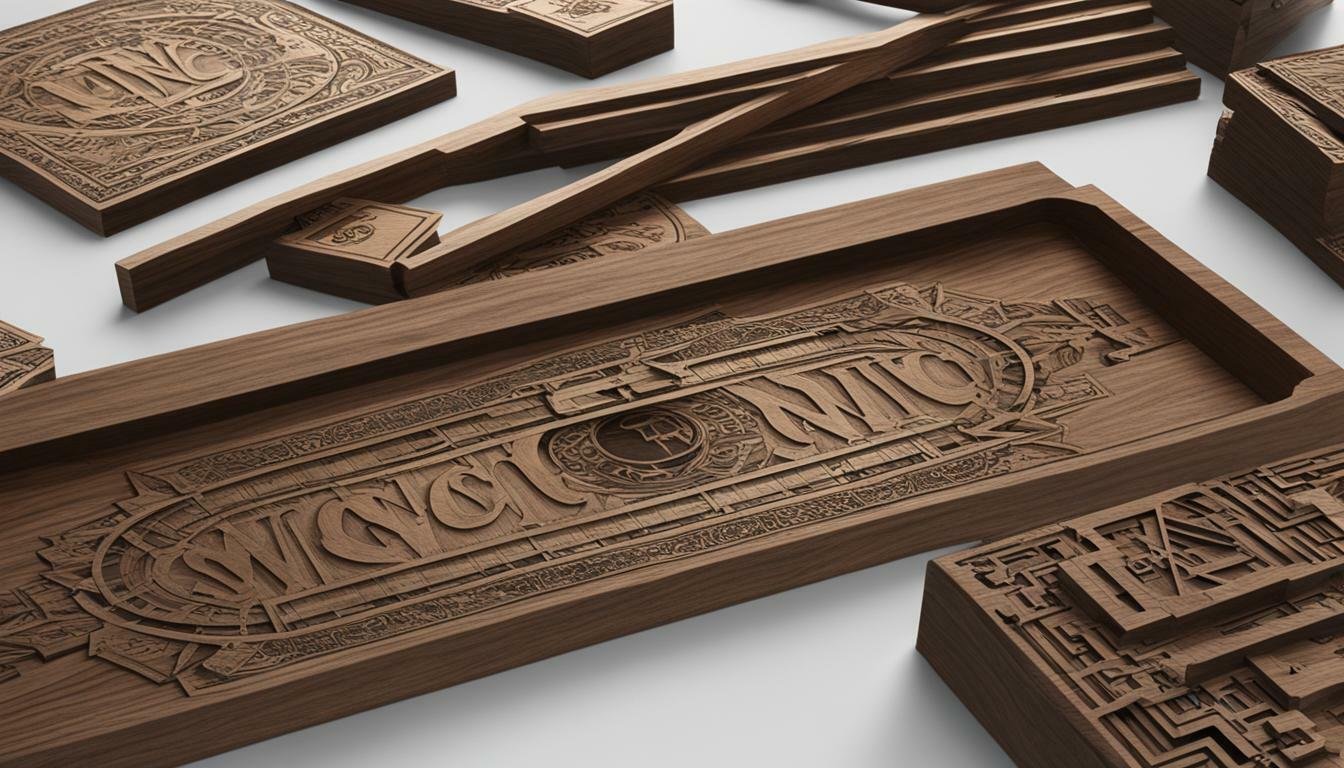If you’re in the woodworking business, understanding the cost of CNC woodwork is essential for optimizing your budget and pricing your projects competitively. Pricing too high can drive away customers, while pricing too low can result in losses. To accurately calculate the cost of CNC wood projects, there are several factors to consider.
Firstly, fixed costs play a significant role. These include the cost of the CNC machine itself, tooling, power consumption, and any interest payments. Additionally, variable costs like materials and labor need to be factored in. It’s also important to consider other costs such as design expenses and overheads.
Once you’ve calculated the total costs, it’s essential to add a markup to cover your profit margin. Typically, a markup of 10-30% is recommended, but this will depend on your specific business needs and market conditions.
When it comes to the cost of CNC machines, there are several factors to consider. The price can vary depending on factors like size, complexity, accuracy, and brand reputation. It’s important to research and compare different options to find the machine that best suits your requirements. Additionally, don’t forget to account for any additional costs like accessories, shipping, taxes, and ongoing maintenance.
For those considering more cost-effective options, DIY CNC router kits can be a viable solution. These kits can range from $796 to $5,600, offering a more affordable entry point for smaller businesses or hobbyists.
Shipping costs are another aspect to consider. Depending on the method, shipping a CNC router can cost around $2,000 by sea and $3,000 by air. These costs may vary based on distance and other factors, so it’s important to obtain accurate quotes.
It’s crucial to evaluate the total cost of ownership when considering the purchase of a CNC router. This includes factors like ongoing maintenance, operational costs, and lifespan. Understanding the long-term costs will give you a clearer picture of the true investment required.
Lastly, it’s important to assess the worthiness of CNC woodwork investments for your specific business. Factors to consider include the volume of projects, potential for growth, and the competitive landscape. Understanding the market and your own business goals will help determine whether a CNC router is a worthwhile investment.
In summary, understanding the pricing for CNC woodwork is essential for businesses using CNC routers. By calculating the costs accurately, adding a suitable markup, and considering all the variables involved, you can optimize your budget and price your projects competitively.
Key Takeaways:
- Understanding the cost of CNC woodwork is crucial for optimizing your budget and pricing your projects competitively.
- Consider both fixed costs (machine cost, tooling, power, interest) and variable costs (materials, labor) when calculating the total cost.
- Adding a markup of 10-30% is recommended to cover your profit margin.
- Research the cost of CNC machines, considering factors like size, complexity, accuracy, and brand reputation, as well as additional costs like accessories, shipping, taxes, and maintenance.
- DIY CNC router kits provide a more affordable option for smaller businesses or hobbyists, with prices ranging from $796 to $5,600.
To accurately calculate the cost of CNC wood projects, it’s important to consider various factors, both fixed and variable, that contribute to the overall pricing. By understanding these factors, you can ensure that your pricing is competitive, profitable, and aligned with your business goals.
When calculating CNC wood costs, fixed costs are those that remain constant regardless of the project size or complexity. These include the initial investment in a CNC machine, tooling, power consumption, and any interest payments if financing the equipment. It’s essential to factor in these fixed costs to determine your breakeven point and ensure that your pricing covers all expenses.
On the other hand, variable costs are directly proportional to the size and complexity of each project. These costs include raw materials, such as wood, hardware, and adhesives, as well as labor. Labor costs can vary depending on factors like the intricacy of the design and the skill level required. By accurately estimating your variable costs, you can price your CNC woodwork competitively and profitably.
Table: Example of Fixed and Variable Costs for CNC Woodwork
| Cost Category | Fixed Costs | Variable Costs |
|---|---|---|
| Machine Cost | $50,000 | – |
| Tooling | $5,000 | – |
| Power Consumption | $500/month | – |
| Interest (if applicable) | $500/month | – |
| Raw Materials | – | $2,000 |
| Labor | – | $1,500 |
In addition to fixed and variable costs, it’s crucial to consider other expenses like design costs and overheads. Design costs include any software or design services required to create the digital files for CNC machining. Overheads encompass rent, utilities, insurance, and other general expenses associated with running your CNC woodwork business. These costs should be factored into your pricing to ensure that your business remains viable and profitable in the long run.
By carefully considering the factors outlined above, you can accurately calculate the cost of CNC wood projects and optimize your pricing strategy. Taking into account both fixed and variable costs, as well as design costs and overheads, will help you determine a fair and profitable price for your CNC woodwork services.
Adding Profit: The Importance of Markup
While calculating the costs of CNC wood projects, it’s vital to add a markup to ensure profitability and the sustainability of your business. The markup is the amount added to the cost price to determine the selling price. By adding a markup, you not only cover your expenses but also generate profit to reinvest in your business and drive growth.
When determining the markup percentage, it’s essential to consider factors like market demand, competition, and your business goals. Typically, markup percentages for CNC wood pricing range from 10% to 30%. However, keep in mind that excessively high markups can deter potential customers, while excessively low markups may result in financial losses.
By adding an appropriate markup, you can cover not only your direct costs, such as materials, labor, and machine maintenance, but also indirect costs like design and overheads. These indirect costs are essential for the smooth operation of your business and should be factored into your pricing strategy.
Maximizing Profit with Effective Markup Strategies
To optimize your pricing and maximize your profit, consider implementing the following strategies:
- Conduct market research to understand your customers’ price sensitivity and determine the optimal markup for your target market.
- Regularly review and adjust your markup percentage to adapt to changes in costs, market conditions, and competition.
- Offer value-added services or unique features that justify a higher markup percentage.
- Build strong customer relationships based on quality, reliability, and exceptional customer service to differentiate yourself from competitors.
Remember, the markup is a crucial component of your pricing strategy. By carefully calculating and implementing an appropriate markup, you can ensure the financial viability of your CNC woodwork business and position yourself for long-term success.
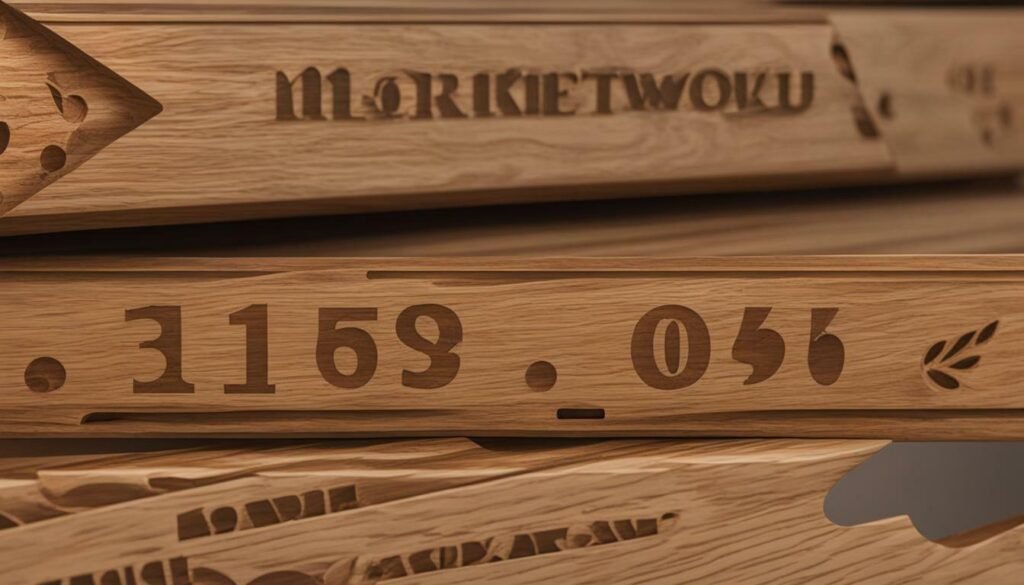
The cost of a CNC machine for woodworking can vary significantly depending on factors such as size, complexity, accuracy, and brand reputation. When considering the cost of a CNC machine, it’s important to take into account not only the initial purchase price but also any additional expenses that may arise.
Size is a major determinant of CNC machine cost. Larger machines with a greater cutting area and higher horsepower can handle larger projects, but they also come with a higher price tag. Complex machines that offer advanced features and capabilities will also be more expensive.
Accuracy is another key factor to consider. CNC machines with higher precision and repeatability will generally cost more due to the advanced technology and components required for precise cutting. Brand reputation can also influence the cost, as machines from well-known and established manufacturers tend to have higher prices.
In addition to the machine itself, there are other costs to consider. Accessories like tooling, software, and clamps can add to the overall expenditure. Shipping costs, taxes, and any required maintenance or repairs should also be factored in. It’s important to carefully evaluate all these costs to get an accurate understanding of the total investment required.
| Cost Considerations for CNC Machines | Approximate Range |
|---|---|
| Small to Medium-sized CNC machines | $10,000 – $50,000 |
| Large and complex CNC machines | $50,000 – $250,000 |
| Additional accessories | $500 – $10,000 |
| Shipping costs | $1,000 – $5,000 |
| Taxes | Varies based on location and regulations |
| Maintenance and repairs | Varies based on machine and usage |
Investing in a CNC machine is a significant decision for any woodworking business. It’s important to carefully consider your specific needs, budget, and long-term goals before making a final decision. Evaluating the total cost of ownership, including both upfront and ongoing expenses, will help ensure you make the most informed choice for your business.
Exploring DIY CNC Router Kits
For those with a budget-conscious approach, DIY CNC router kits can be an attractive option for woodworking projects. These kits provide the opportunity to build your own CNC router, saving costs compared to purchasing a pre-built machine. The price range for DIY CNC router kits can vary depending on factors like size, functionality, and brand reputation. Kits can start as low as $796 and go up to $5,600, offering flexibility to choose a kit that fits your specific needs.
DIY CNC router kits typically include all the necessary components and instructions for assembly. Most kits come with pre-cut materials, motors, control boards, and software. Some kits may require additional tools or accessories, so it’s important to review the contents of the kit before making a purchase. Assembly times can vary depending on the complexity of the kit, ranging from a few hours to a few days.
| DIY CNC Router Kit | Price Range |
|---|---|
| Kit A | $796 – $1,200 |
| Kit B | $1,500 – $2,500 |
| Kit C | $3,000 – $5,600 |
When considering a DIY CNC router kit, it’s important to assess your woodworking needs and the level of technical expertise required for assembly. These kits can offer a cost-effective solution for hobbyists, small businesses, or individuals looking to explore CNC woodworking without investing heavily in a pre-built machine.

In conclusion, DIY CNC router kits provide a budget-friendly option for those interested in CNC woodworking. With a range of kits available at different price points, individuals can choose a kit that suits their needs and budget. These kits offer the opportunity to build your own CNC router while saving costs compared to purchasing a pre-built machine. Whether you’re a hobbyist or a small business, exploring DIY CNC router kits can be a rewarding and cost-effective choice for your woodworking projects.
Considerations for Used CNC Machines
Buying a used CNC machine can offer initial cost savings, but it’s important to weigh the potential higher repair costs associated with them. Used machines can be a viable option for businesses looking to invest in CNC woodworking without breaking the bank. However, it’s essential to thoroughly evaluate the condition and history of the machine to ensure its reliability and longevity.
When purchasing a used CNC machine, consider factors such as the age of the machine, its maintenance history, and any previous repairs. Request documentation and ask the seller about the machine’s performance and any known issues. Inspect the machine in person if possible or request detailed photos and videos to assess its overall condition.
While used machines may require more frequent repairs and maintenance compared to new ones, the cost savings upfront can outweigh the potential higher repair costs. It’s crucial to factor in the additional expenses associated with repairs and maintenance when calculating the overall cost of a used CNC machine. Consider the availability of replacement parts and the expertise required for repairs to ensure you can address any issues efficiently.
Ultimately, whether or not to purchase a used CNC machine will depend on your specific needs and budget. Careful research, thorough inspections, and open communication with the seller can help you make an informed decision and find a used machine that suits your woodworking requirements.
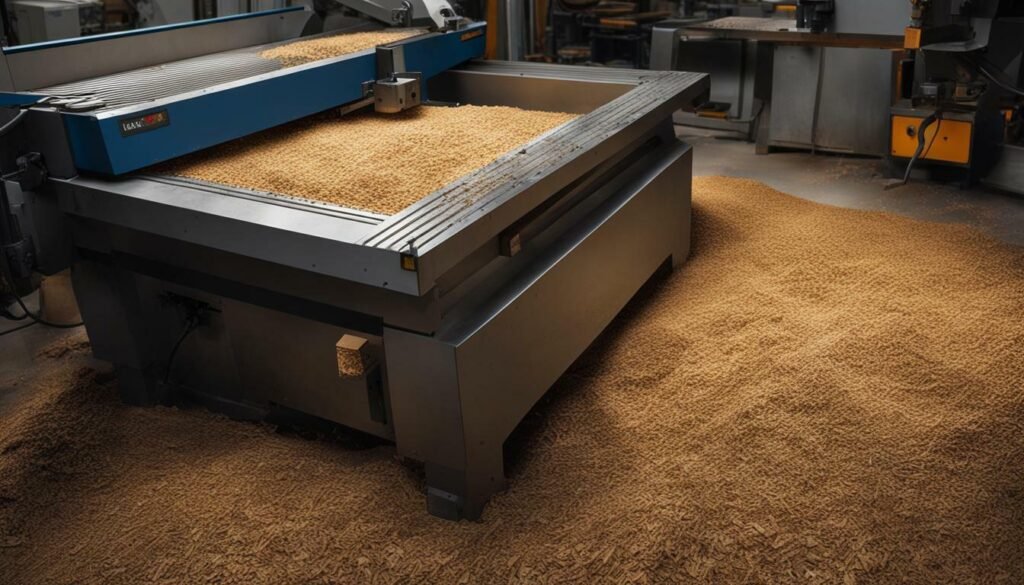
| Pros | Cons |
|---|---|
| Cost savings upfront | Potentially higher repair costs |
| Opportunity to acquire a higher-end machine at a lower price | Potential lack of warranty or limited support |
| Availability of a wider range of models and brands | Risk of purchasing a machine with undisclosed issues |
Shipping Costs and Considerations
When purchasing a CNC router, it’s important to factor in shipping costs, which can vary depending on the shipping method chosen. Shipping a CNC router can be a significant expense, so it’s crucial to consider the shipping costs and take them into account when calculating the overall cost of the machine.
The cost of shipping a CNC router can vary depending on several factors, including the size and weight of the machine, the shipping distance, and the shipping method selected. Shipping by sea is typically more affordable but can take longer, while shipping by air is faster but more expensive.
To give you an idea of the potential costs involved, shipping a CNC router by sea may cost around $2,000, while shipping by air could be around $3,000. These figures are estimates and can vary depending on your location and the specific dimensions and weight of the machine.
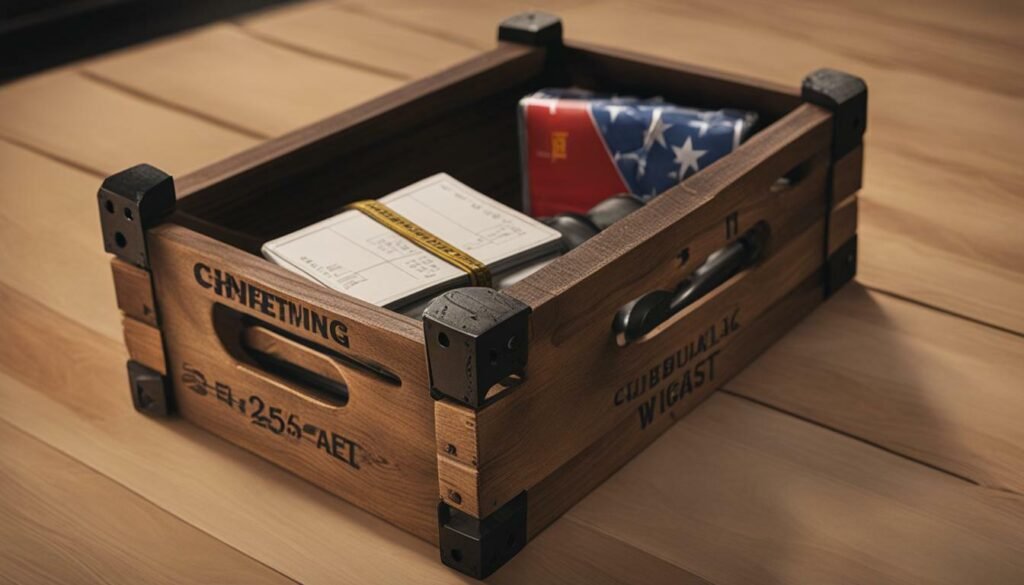
It’s important to consider the shipping costs when budgeting for a CNC router purchase. Be sure to factor in these expenses along with the cost of the machine itself, accessories, taxes, and maintenance. By carefully considering the shipping costs and incorporating them into your calculations, you can make informed decisions and ensure that you are fully prepared for the total cost of your CNC router investment.
Understanding the Total Cost of Ownership
Calculating the total cost of ownership is essential to determine whether investing in a CNC router is worth it for your specific needs. While upfront costs like machine purchase and installation are important, it’s crucial to consider the long-term expenses associated with owning and operating a CNC router.
When evaluating the total cost of ownership, it’s important to factor in maintenance costs, including routine servicing, repairs, and replacement parts. These expenses can vary depending on the complexity and age of the machine, as well as the availability and cost of spare parts. Additionally, consider the lifespan of the machine and its depreciation value over time.
Operational costs such as power consumption and tooling also contribute to the total cost of ownership. CNC routers typically require a significant amount of electricity, which can add up over time. Tooling, including router bits and cutting tools, may need to be replaced regularly, impacting your overall expenses. By budgeting for these ongoing operational costs, you can better assess the financial viability of your investment.
To illustrate the total cost of ownership, let’s consider an example. Imagine you purchase a CNC router for $30,000. Over a three-year period, you estimate spending an additional $5,000 on maintenance, repairs, and replacement parts. Assuming an average annual power cost of $2,000 and an annual tooling cost of $1,500, your total cost of ownership would amount to $39,500 over the three years. This calculation helps provide a clearer picture of the investment and its impact on your bottom line.
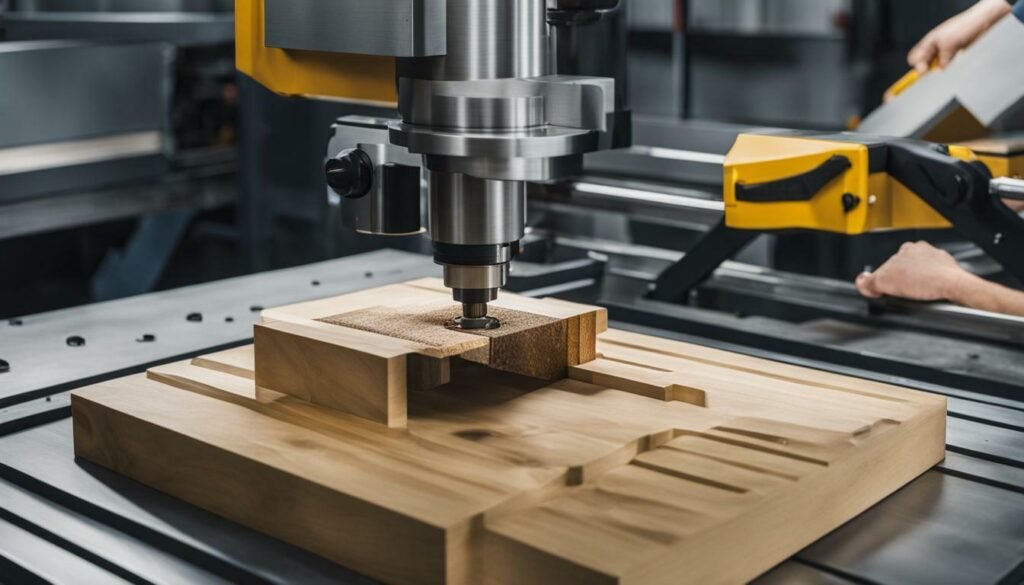
| Cost Component | Estimated Cost |
|---|---|
| Machine Purchase and Installation | $30,000 |
| Maintenance, Repairs, and Replacement Parts (3 years) | $5,000 |
| Annual Power Consumption (3 years) | $6,000 |
| Annual Tooling Cost (3 years) | $4,500 |
| Total Cost of Ownership (3 years) | $39,500 |
Understanding the total cost of ownership enables you to make informed decisions about investing in CNC routers. By considering the long-term expenses, you can assess the feasibility and profitability of incorporating CNC woodwork into your business.
Evaluating the Worthiness of CNC Woodwork Investments
When deciding whether investing in a CNC router is worth it, it’s important to consider various factors that can impact the profitability and sustainability of your woodworking business. Making an informed decision requires evaluating both the financial and operational aspects of incorporating CNC technology into your workflow. Here are key factors to consider:
- Projected volume of work: Assess the demand for CNC woodwork in your market and estimate the volume of projects you expect to handle. If you anticipate a high volume of work, investing in a CNC router can help increase efficiency and meet customer demand.
- Potential for growth: Consider the growth potential of your business. If you plan to expand your operations and take on larger or more complex projects in the future, a CNC router can offer the necessary capabilities to meet those goals.
- Competitive landscape: Research your competition and analyze their use of CNC technology. If your competitors are utilizing CNC routers and gaining a competitive advantage, it may be necessary to invest in order to stay relevant and competitive in the market.
While investing in a CNC router can bring numerous benefits, it’s important to carefully evaluate your specific needs and financial situation. Conduct a cost-benefit analysis to determine the potential return on investment. Consider factors such as the initial investment cost, ongoing maintenance and operational costs, and the expected lifespan of the equipment.
| Cost Considerations | Key Points |
|---|---|
| Initial Investment | Consider the cost of purchasing a CNC router, including any additional accessories or software required. |
| Maintenance and Operational Costs | Budget for regular maintenance, tooling, power consumption, and any required software updates. |
| Expected Lifespan | Research the durability and expected lifespan of different CNC router models to determine the long-term value. |
By carefully considering these factors and conducting thorough research, you can determine whether investing in a CNC router is worth it for your woodworking business. Remember to weigh the potential benefits against the upfront costs and ongoing expenses to make an informed decision.
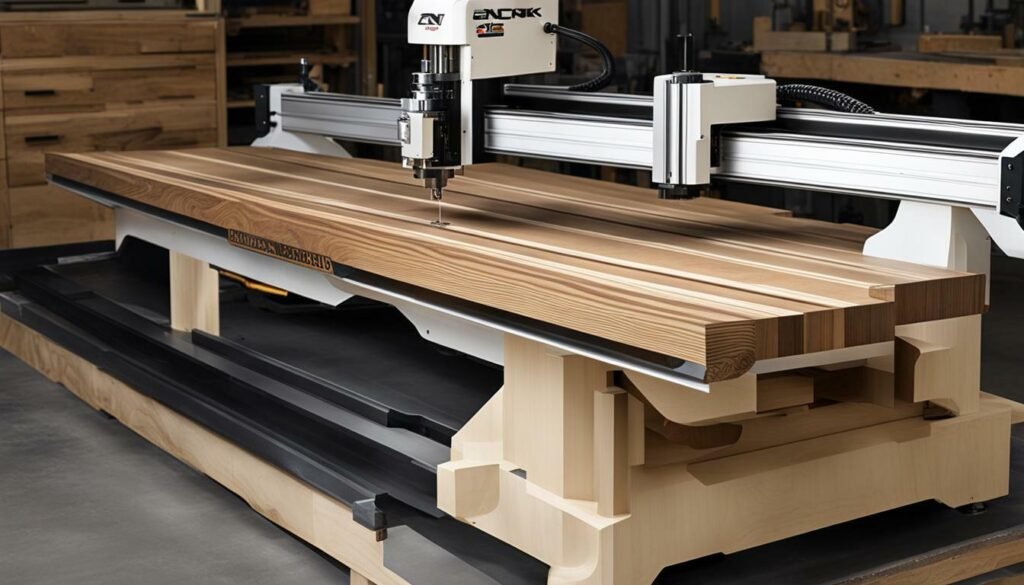
Optimizing your budget is crucial in CNC wood pricing to ensure profitability and maintain a competitive edge in the woodworking industry. Pricing your CNC wood projects too high can drive away potential customers, while pricing too low can result in losses for your business. By carefully considering and optimizing your budget, you can strike a balance that benefits both your bottom line and customer satisfaction.
When calculating the cost of CNC wood projects, it’s essential to take into account both fixed and variable costs. Fixed costs include expenses such as machine cost, tooling, power, and interest. These costs remain constant regardless of the project size or duration. On the other hand, variable costs like materials and labor are directly influenced by the specific project requirements.
In addition to these direct costs, it’s important to consider other expenses that contribute to the overall budget. These can include design costs, overhead expenses, and any costs associated with maintenance or upgrading of your CNC machine. By factoring in these additional costs, you can ensure a more accurate pricing structure.
To maintain profitability, it’s crucial to add a markup to cover your desired profit margin. A markup of 10-30% is typical in the industry. This markup helps to account for any unforeseen expenses, as well as to sustain and grow your business over time. By including a reasonable profit margin in your pricing, you can ensure long-term success in the CNC woodwork industry.
| Cost Category | Approximate Cost |
|---|---|
| CNC Machine | $10,000 – $100,000+ |
| Tooling | $500 – $5,000 |
| Materials | Varies based on project |
| Labor | Varies based on project |
| Design Costs | Varies based on complexity |
| Overhead Expenses | Varies based on business size |

By optimizing your budget and considering all relevant costs, you can effectively price your CNC wood projects, remain profitable, and stay competitive within the woodworking industry. It’s crucial to strike the right balance between pricing and value, ensuring that your customers see the worth in your work while allowing your business to thrive.
Staying Competitive in CNC Wood Pricing
In a competitive market, staying competitive in CNC wood pricing requires continuous market research, adaptability to industry trends, and building long-lasting customer relationships. By keeping a finger on the pulse of the market, you can identify emerging trends, changing customer preferences, and new competitive threats. This information allows you to adjust your pricing strategy accordingly and stay ahead of the competition.
Adaptability is key in the ever-evolving world of CNC woodwork. By staying up-to-date with technological advancements and industry best practices, you can optimize your production processes and offer innovative solutions that set you apart from your rivals. Embracing new tools, techniques, and materials can help you deliver high-quality results efficiently, allowing you to offer competitive prices while maintaining profitability.
Building strong and long-lasting customer relationships is crucial for staying competitive in CNC wood pricing. By understanding your customers’ needs, preferences, and pain points, you can tailor your pricing and services to meet their specific requirements. Providing exceptional customer service, timely communication, and reliable delivery will not only help you retain existing customers but also attract new ones through positive word-of-mouth recommendations.
To summarize, to stay competitive in CNC wood pricing, businesses must conduct continuous market research, adapt to industry trends, and prioritize building strong customer relationships. By applying these strategies, you can position yourself as a reliable and innovative provider, offering competitive prices and superior customer value.
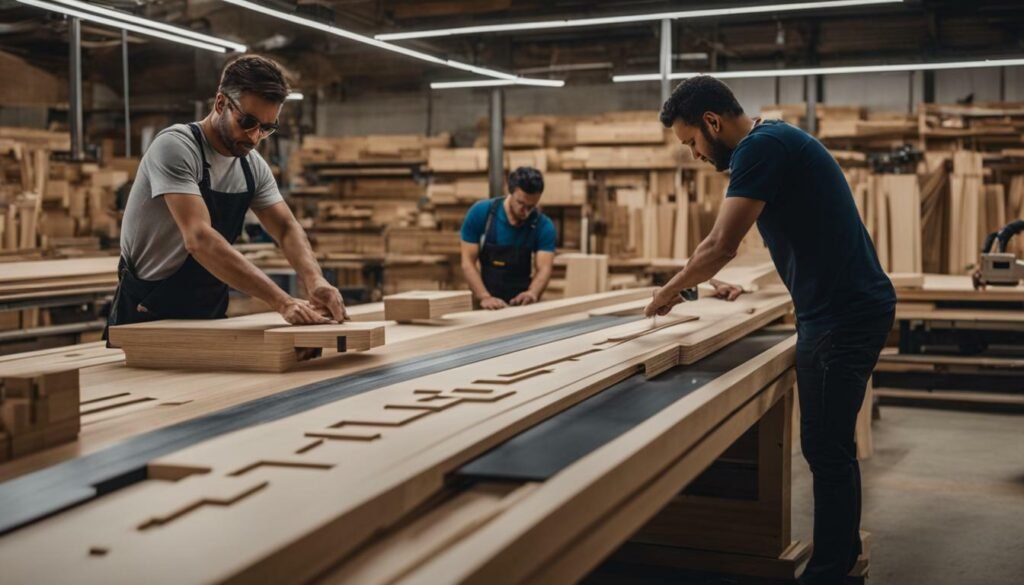
Understanding the costs involved in CNC woodwork and optimizing pricing is essential for businesses to thrive in the woodworking industry. Pricing your CNC wood projects correctly can make or break your business. Setting the price too high can drive away potential customers, while pricing too low may result in losses for your company. It’s crucial to strike a balance that ensures profitability while remaining competitive in the market.
Calculating the cost of CNC wood projects involves considering both fixed and variable costs. Fixed costs include the initial investment in CNC machines, tooling, power, and interest. Variable costs encompass materials and labor. It’s important to factor in all of these costs, as well as additional expenses like design and overheads, to ensure an accurate and comprehensive pricing strategy.
Once you have calculated the total cost of your CNC wood project, it’s essential to add a markup to cover profit. The markup percentage typically ranges between 10% and 30%. This additional charge ensures that your business can sustain its operations, invest in growth, and remain profitable in the long run.
When considering the cost of CNC machines, various factors can influence the price. These include the size, complexity, accuracy, and brand reputation of the machine. Additionally, you should consider accessories, shipping costs, taxes, and maintenance expenses when determining the total cost of owning a CNC machine. Purchasing a used machine may offer a lower upfront cost, but it’s important to weigh the potential savings against the potential higher repair costs.
If you’re considering DIY CNC router kits, prices can range from $796 to $5,600, depending on the kit’s features and capabilities. Additionally, router bits, an essential component of CNC woodworking, can start at $8. When shipping a CNC router, the costs can vary depending on the mode of transportation. Shipping by sea may cost around $2,000, while shipping by air can be around $3,000.
Ultimately, it’s crucial to consider the total cost of ownership when evaluating the worthiness of investing in CNC woodwork. This involves considering ongoing maintenance and operational costs, as well as the expected lifespan of the CNC machine. By optimizing your budget and pricing strategy, you can maximize profitability and competitiveness in the woodworking industry. Stay updated on market trends, conduct thorough market research, and build strong customer relationships to stay competitive and thrive in the CNC wood pricing landscape.
FAQ
What factors should be considered when calculating CNC wood costs?
When calculating CNC wood costs, it is important to consider both fixed costs, such as machine cost and tooling, as well as variable costs like materials and labor. Additionally, other costs like design and overheads should be taken into account.
What is the importance of adding a markup to CNC wood pricing?
Adding a markup is crucial to cover profit in CNC wood pricing. It ensures that businesses can sustain their operations and generate revenue. Markup percentages typically range from 10-30%.
How much does a CNC machine for woodworking cost?
The cost of a CNC machine for woodworking can vary depending on factors like size, complexity, accuracy, and brand reputation. Additionally, there may be additional costs to consider such as accessories, shipping, taxes, and maintenance.
What is the price range for DIY CNC router kits?
DIY CNC router kits can range from $796 to $5,600, depending on the features and capabilities of the kit.
What should be considered when purchasing a used CNC machine?
When purchasing a used CNC machine, it is important to consider the potential cost advantages of buying it upfront, but also the potential higher repair costs that may be associated with used machines.
How much does it cost to ship a CNC router?
The cost of shipping a CNC router can vary depending on the shipping method. Shipping by sea may cost around $2,000, while shipping by air can cost around $3,000.
What is the total cost of ownership for CNC wood projects?
The total cost of ownership for CNC wood projects includes factors like maintenance, operational costs, and the lifespan of the machinery. It is important to consider these factors when calculating the overall cost of a project.
How can I evaluate the worthiness of investing in CNC woodwork?
To evaluate the worthiness of investing in CNC woodwork, consider factors such as project volume, potential for growth, and the competitive landscape. Assessing these factors can help determine if the investment is worthwhile for your specific needs.
How can I optimize my budget for CNC wood pricing?
To optimize your budget for CNC wood pricing, focus on strategies like efficient material usage, labor optimization, and finding cost-effective suppliers. Regularly review and adjust your budget to maximize profitability.
How can I stay competitive in CNC wood pricing?
To stay competitive in CNC wood pricing, conduct market research to stay updated on industry trends and pricing benchmarks. Additionally, build strong customer relationships by providing excellent service and quality products.
What are the Advantages and Disadvantages of Milling Compared to Turning for My Project?
When deciding between turning versus milling for your project, it is important to consider the advantages and disadvantages. Milling offers precision and flexibility, enabling complex designs and multiple cuts simultaneously. However, it can be time-consuming and costly. On the other hand, turning excels in creating cylindrical shapes quickly, but may limit design options. Ultimately, understanding your project’s requirements will help in making the best turning versus milling: project comparison decision.
